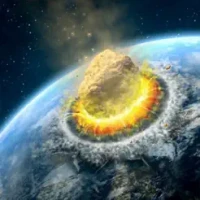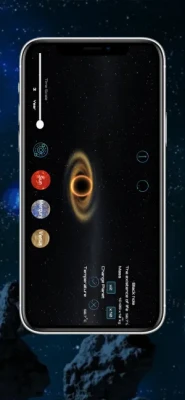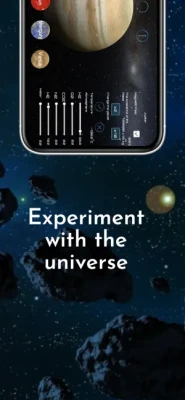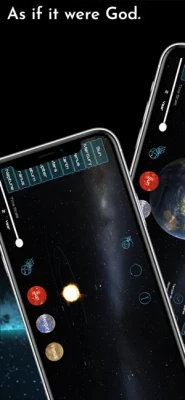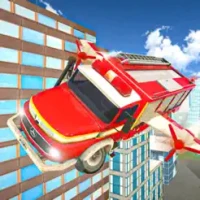
Latest Version
2.1
January 19, 2025
Heechang Kim
Games
iOS
412.2 MB
0
Free
Report a Problem
More About Toy Universe Light
Exploring the Mysteries of the Universe: What If Scenarios That Challenge Our Understanding
The universe is a vast expanse filled with mysteries that ignite our curiosity. As we delve into the unknown, we often ponder intriguing questions about celestial bodies and their interactions. This article explores some fascinating hypothetical scenarios that challenge our understanding of the cosmos.
What If There Were Two Jupiters in Our Solar System?
Imagine a solar system where two Jupiters coexist. This scenario raises numerous questions about gravitational dynamics and planetary formation. Jupiter, the largest planet in our solar system, exerts a significant gravitational pull. If a second Jupiter were to exist, its gravitational influence would alter the orbits of nearby planets, including Earth.
In such a scenario, the stability of the solar system could be compromised. The gravitational tug-of-war between the two gas giants might lead to chaotic orbital patterns, potentially ejecting smaller planets or asteroids from their orbits. This could result in a dramatically different solar system, where the conditions for life on Earth might be severely impacted.
The Catastrophic Consequences of a Jupiter-Earth Collision
What would happen if Jupiter and Earth collided? This catastrophic event would have devastating consequences. Jupiter's immense size and mass would overpower Earth, leading to a collision of unimaginable proportions. The impact would release energy far greater than any nuclear explosion, obliterating the planet and everything on it.
The aftermath of such a collision would create a massive debris field, potentially forming a new asteroid belt. The shockwaves from the impact would ripple through the solar system, affecting the orbits of other planets and possibly altering the trajectory of comets and asteroids. Life as we know it would cease to exist, and the solar system would be forever changed.
What If Earth Grew Ten Times Bigger?
Consider the implications of Earth expanding to ten times its current size. Such a transformation would drastically alter the planet's geology, atmosphere, and ecosystems. A larger Earth would have a stronger gravitational pull, affecting everything from the behavior of oceans to the structure of the atmosphere.
With increased gravity, the weight of objects would rise, impacting the growth of plants and the movement of animals. The atmosphere might become denser, leading to higher air pressure and potentially altering weather patterns. Additionally, tectonic activity could increase, resulting in more frequent earthquakes and volcanic eruptions.
This scenario raises questions about the viability of life. Would organisms adapt to the new conditions, or would many species face extinction? The ecological balance would be disrupted, leading to a planet that is unrecognizable compared to what we know today.
The Enigmatic Gravity of Black Holes
Black holes are among the most mysterious entities in the universe, characterized by their incredibly strong gravitational pull. But how strong is gravity in a black hole? The gravitational force near a black hole is so intense that not even light can escape its grasp, leading to the term "black hole."
As one approaches the event horizon—the point of no return—the gravitational pull increases exponentially. This phenomenon creates extreme tidal forces, which can spaghettify objects, stretching them into long, thin shapes. The study of black holes challenges our understanding of physics, particularly in the realms of general relativity and quantum mechanics.
Understanding black holes is crucial for unraveling the mysteries of the universe. They serve as laboratories for testing theories of gravity and spacetime, providing insights into the fundamental laws that govern our cosmos.
Simulating the Unknown: The Power of Technology
All these hypothetical scenarios can be simulated using advanced technology and computational models. Scientists utilize powerful supercomputers to create simulations that mimic the behavior of celestial bodies under various conditions. These simulations help researchers visualize complex interactions and predict outcomes that would be impossible to observe directly.
Through simulation, we can explore the consequences of multiple Jupiters, catastrophic collisions, planetary expansions, and the enigmatic nature of black holes. This technology not only enhances our understanding of the universe but also fuels our curiosity, pushing the boundaries of what we know.
Conclusion: The Endless Quest for Knowledge
The universe is a treasure trove of mysteries waiting to be explored. By contemplating scenarios such as the existence of two Jupiters, the catastrophic consequences of a collision, the implications of an expanded Earth, and the gravity of black holes, we expand our understanding of the cosmos. Through simulation and technology, we continue to unravel the secrets of the universe, fostering a sense of wonder and curiosity that drives scientific discovery.
Rate the App
User Reviews
Popular Apps










Editor's Choice










